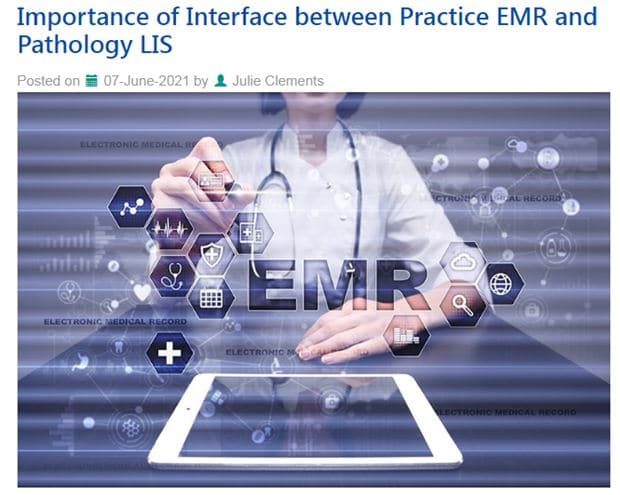
Table of Contents
Obtaining customer feedback is crucial for businesses. By scrutinizing this feedback, companies can monitor customer experiences, satisfaction levels, and interactions across various touchpoints. Pinpointing what customers want helps companies to meet their expectations and requirements. In the healthcare industry, the patient is the consumer and analyzing patient viewpoints is paramount to improve safety, quality of care, and the patient experience. Medical transcription services help healthcare providers capture accurate patient voice data from the electronic health record (EHR).
What is the “Patient Voice” and Why is it Important?
In simple terms, “patient voice” refers to the outlook, opinions, and experiences of patients in the healthcare decision-making process. The patient voice is critical because it allows healthcare providers and policymakers to understand and address patient needs and preferences.
The complete continuum of healthcare, ranging from primary care to hospitalization and post-treatment rehabilitation, is experienced firsthand by the patient. For this reason, their views regarding their experience play a unique role in determining the quality of healthcare. Actively listening to what patients say about their experiences, needs, values, and goals can help healthcare providers to improve the care they provide.
Collecting and Using Patient Voice Data
One main challenge in the patient voice data process is collecting it. Providers can collect patient voice data from various sources:
- EHRs: Staff can ask patients about symptoms and their severity and recent medical history before the consultation and enter the information in the electronic health record (EHR). Using standardized electronic questionnaires can improve the efficiency, completeness, and accuracy of data collection from patients. This information can be the starting point for discussions during the clinical encounter and also support medical decision making.
- Surveys: This option involves using standardized survey tools such as the Consumer Assessment of Healthcare Providers and Systems (CAHPS) or developing practice/provider specific questions to gather specific information from patients. Satisfaction surveys can be used to understand patient sentiment.
- Patient and family advisory councils (PACs): PACs should include a varied array of patients and family caregivers to receive input from different types of stakeholders, notes a patientengagementhit.com report. These councils can influence hospital policies, which can impact how patients and their caregivers interact with the hospital.
- Focus Groups: By conducting focus groups, providers can hear directly from patients in a group setting. These groups can provide valuable insights into the patient experience.
- Patient complaint forms: Assessing patient complaints can be as effective as assessing patient satisfaction. This is an essential window into what patients truly want during a care experience, according to a 2017 study published in the Joint Commission Journal on Quality and Patient Safety. The study found that patient complaints related to patient-provider relationships, patient safety and care quality, humanness and caring, communication, and patient-staff dialogue.
- Online patient feedback and provider review platforms: Patients often express their sentiments about their healthcare experiences on platforms such as Yelp, HealthGrades, Vitals, and ZocDoc. Assessing reviews left on these popular websites can help providers better understand the patient experience and make the needed improvements.
- Telehealth and video consultation records: Virtual care records are a very important source of patient voice data. Video content analysis tools can be used to search for relevant topics, themes, and entities. The Covid-19 pandemic proved that online consults are as essential as in-person interactions.
- Voice notes during consultations: Recording the clinical encounter can provide real-time record of the physician’s diagnosis, treatment advice or plans. Interactions with the patient can be used for medical references, and also to know the reasons underlying positive and negative feedback.
- Customer service calls: With an efficient, integrated call center or chatbot service, pharma and healthcare providers can capture vitally important information from patients and identify gaps in their services. Healthcare customer support call services also handle insurance processing, helping to measure the efficiency of billing operations.
- Email: Secure emails are now a common means of communication between patients and providers. Patients may use email to communicate with their healthcare provider for non-urgent questions, prescription refills, appointment scheduling, and test results, making it a reliable way of obtaining patient information as well as feedback.
- Questionnaires: Questionnaires can be used to gather feedback from patients about their healthcare experience, including the quality of care provided, communication with healthcare providers, and overall satisfaction with the healthcare facility. They can help providers develop individualized patient plans by identifying areas of concern or potential risk factors.
- Patient Feedback Systems: Implementing a patient feedback system such as a suggestion box or online feedback form can help collect feedback from patients in real-time.
- Social media: Listening to conversations on social media can provide unfiltered and real-time feedback on patient thoughts, opinions, and concerns. The gathered data can be used to analyze, understand, and address patient pain points in their healthcare journey and provide better medical treatment and care.
How Analyzing Patient Voice Comments can Improve Care
Listening to and analyzing the patient voice comments can help providers deliver a more positive patient experience in many ways:
- Identify areas for improvement: Patient feedback can help providers gain valuable insights into where their organization is meeting patient expectations and where more effort is needed. It can help them understand what patients like and dislike about their practice, and make changes to address any concerns.
- Improve communication: Providers can use patient feedback to pinpoint areas where communication with patients could be improved. They can use the information to improve how they communicate with patients, and ensure that they understand their diagnosis, treatment plan, and other important information.
- Increase patient satisfaction: Based on the feedback, providers can take steps to address patient concerns and improve the patient experience. This can increase patient satisfaction and loyalty, and drive higher patient retention rates and more positive patient reviews.
- Boost patient engagement: By studying patient feedback can help providers understand how engaged their patients are with their healthcare. They can use this information to develop strategies to increase patient engagement in their healthcare.
Analyzing patient feedback consistently, addressing patient concerns, and involving patients in the planning, delivery, and evaluation of healthcare services is crucial for improving the quality of care, enhancing patient satisfaction, and achieving better healthcare outcomes. As an experienced medical transcription company in the US, we are focused on delivering accurate and timely transcripts from voice recordings which providers can be analyzed to obtain valuable information and actionable insights to enhance care.


